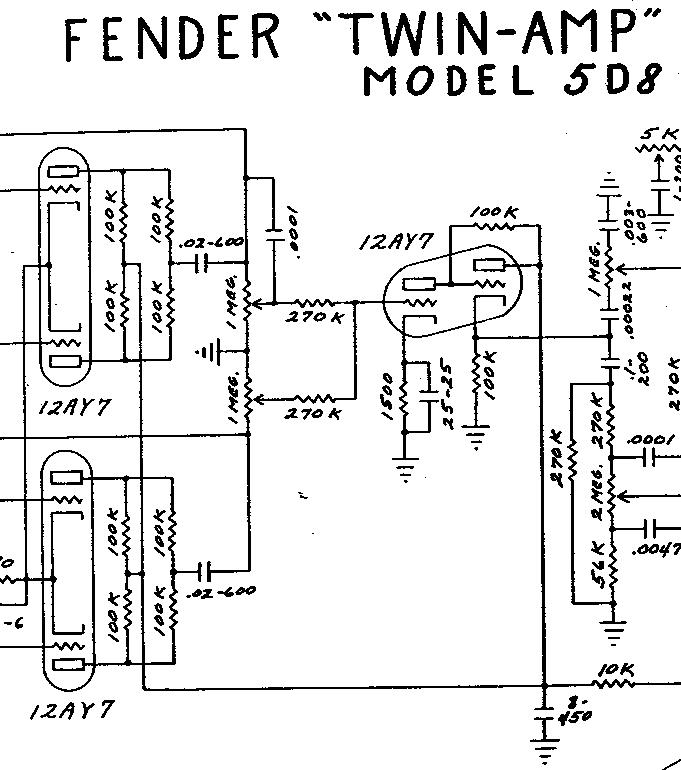Truly. The description is generic to some Tweed models. I guess that's not clear.
Take a look at the schematic and it is clearer what is being discussed.
 The Tweed Deluxe is unique
The Tweed Deluxe is unique in that the volume controls are not voltage dividers and work by loading down the signal from the plates of the pre-amp tube. Because of this, you get the max mids in the channel you are plugged into when the other volume control is at it's mid position.. Max midrange scoop ocurrs when the other control is turned to full.
Set one channel (say Normal one) to max and the other (Bright) to mid position. When you select the Bright channel, you should get nice clean tones and when you select the Normal channel, you will get nicely distorted tones.
The clean tones work because you are not overdriving the bright channel and you are scooping the midrange. On the Normal channel, you get the nice lead tones because you are overdriving the output stage and boosting the mids.
Gerald BBQ explains it in his book, Tube Amp Talk. A worthwhile read.



